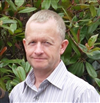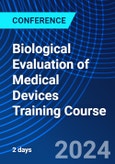The ISO 10993 series of standards covering biological evaluation of medical devices is well established and regulatory authorities worldwide expect compliance. In Europe, compliance with the standards is the easiest way to meet the essential product safety requirements of the MDR and understanding a risk management approach to biological safety is essential.
This seminar will provide key guidance on how to use the standards and successfully apply a risk management approach to the biological evaluation of medical devices. There will be plenty of time during the programme for interactive discussions with experts in this field.
Benefits of attending:
- Understand biological risk management
- Clarify the requirements of ISO 10993-1
- Learn what endpoints need to be addressed in a biological risk assessment
- Establish how much chemical characterisation is necessary
- Hear the FDA’s approach to ISO 10993
- Better understand Medical Device Directive (MDD) safety requirements vs the Medical Device Regulation (MDR) safety requirements
- Know how extractables and leachables impact on medical device safety
- Discuss the Japanese and Chinese requirements
Certifications:
- CPD: 12 hours for your records
- Certificate of completion
Agenda
Day 1
- An Introduction to Biological Evaluation
- Overview of Biocompatibility
- ISO 10993 History and Development/ISO 10993 Structure and Content
- Relationship Between Regulatory Standards
- Impact of MDR
- Impact of Brexit
- Gap Analysis of Existing Biocompatibility Data
- Medical Device Categorisation for Biological Risk Assessment + Practical Exercise
- Endpoints to be Addressed in a Biological Risk Assessment
- GLP Requirements
- Lab Selection
Day 2
- Physical and Chemical Characterisation
- Extractables and Leachables Testing - when and why? + Practical Exercise
- Use of QSAR
- Use of Data Sources to and Literature Searching
- Change Management
- International Requirements
- Gas Pathway Devices + Practical Exercise
Speakers

Mr Philip Clay,
Director, Principal Toxicologist ,
Chorley ConsultingPhilip Clay is Director and principal toxicologist with Chorley Consulting. He is a UK and European registered toxicologist and specialises in product safety assessment with over 30 years’ experience in toxicology and safety assessment. He is a BSI committee member on CH/194 (Biological evaluation of medical devices) and Principal Expert for WG6 (Mutagenicity, carcinogenicity and reproductive toxicity).
Philip established his reputation as a genetic toxicologist working within the agrochemical, chemical and pharmaceutical industries. He has contributed to many expert panels, helping to shape the testing guidelines and strategies in place today. More recently, this experience and depth of understanding has been applied to designing safety assessment programmes for medical devices and consumer healthcare products for a wide range of clients. Philip is presently a member of a Consumer Healthcare Products Association (CHPA) expert group lobbying US FDA regarding the use of in vitro data in the assessment of the biocompatibility of medical devices.
He has extensive experience in the biological safety evaluation of a wide range of medical devices from Class 1 consumer healthcare devices through to Class 3 implantable devices. He is an experienced speaker at scientific conferences and has delivered training on biological safety evaluation around the world.
Rona Middlemiss,
Chorley ConsultingRona is a Senior Safety Assessor with Chorley Consulting. She holds a first class MSci in Biomedical Sciences from the University of Aberdeen. Additionally, she has attended training courses on the Practical Application of Toxicology in Drug Development and also Personal Animal License Course, Modules 1-3. She spent her year industry with a multinational consumer healthcare and medical device manufacturer, gaining experience in the safety assessment of medical devices. She joins Chorley from a Scientist role with British American Tobacco where she honed her toxicology skills performing toxicological risk assessment for harm reduction products. Rona brings to Chorley experience gained with a healthcare medical device manufacturer as well toxicological risk assessment skills gained during her time with BAT.
During her time with Chorley, Rona has rapidly developed her skills in performing toxicological risk assessments of extractable and leachable data including the use of in silico tools for the prediction of toxicological effects. She has also developed her presentation skills, having presented a number of on-line training modules around various aspects of Biological Evaluation of Medical Devices.
Who Should Attend
The event will be of particular importance to those in the medical device industry from the following departments:
- Regulatory affairs
- R&D
- Product safety/toxicology
- Analytical chemistry
- Risk assessment and risk management
- Materials research and evaluation
It will also be of interest to regulatory authorities, Notified Bodies and CROs supporting the medical device industry.
Location
ADDRESS
Rembrandt Hotel
11 Thurloe Pl,
Kensington
London
SW7 2RS
United Kingdom
DIRECTIONS
The Rembrandt Hotel is located at 11 Thurloe Place, London, SW7 2RS. The hotel’s location in central London couldn’t be better, whether you’re travelling for business or leisure. You’ll be right between two of London’s most fashionable areas – South Kensington and Knightsbridge – within walking distance of museums, theatres, Harrods and Hyde Park.
You can hop on the Tube at South Kensington and take the District, Circle or Piccadilly lines direct to the City of London, Heathrow Airport and all other areas of the city. Look out of your window and you may well see the Victoria and Albert Museum – it’s right across the street.










